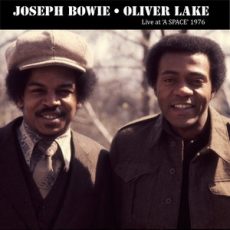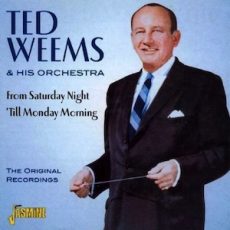
Daily Dose Of Jazz…
Joseph Bowie was born October 17, 1953 in St. Louis, Missouri and was greatly influenced by his older brothers, saxophonist Byron and trumpeter Lester. His first international tour was with Oliver Lake of the Black Artists Group in 1971. During this time in Paris, France he worked with Alan Silva, Frank Wright, and Bobby Few. He also worked with Dr. John in Montreux, Switzerland in 1973.
Moving to New York City, and with the help of Off Broadway Theater impresario Ellen Stewart he established La Mama children’s theater. He performed with Cecil Taylor, Human Arts Ensemble, Nona Hendryx, Leroy Jenkins, Vernon Reid, Stanley Cowell, Sam Rivers, Philippe Gaillot, Dominique Gaumont and Ornette Coleman.
In 1976 Joseph relocated to Chicago, Illinois where he led bands for Tyrone Davis and other R&B artists. Returning to New York City in 1978 he began singing with punk and funk musician James Chance and the Contortions. Defunkt was born during that time and over the next 25 years, Defunkt recorded 15 albums.
Bowie has collaborated with Jean-Paul Bourelly and Jamaaladeen Tacuma. He has performed “big band funk” arrangements with Ed Partyka at Music School Lucerne, Barbary Coast Ensemble at Dartmouth College, JazzArt Orchestra, and the HR Frankfurt Radio Big Band. The first Defunkt Big Band debuted in 1999 in New York City at the Texaco Jazz Festival sponsored by the Knitting Factory.
In 2003, he moved to the Netherlands where he met Hans Dulfer and was introduced to the Dutch music scene. He has performed with Hans, Candy Dulfer, Saskia Laroo Band, Naked Ears, Monsieur Dubois, Emergency Room, Funkateer, Seven Eleven, and Almost Three.
In 2014 he produced Sax Pistols Allergy for the U.S (ZIP Records) with lyricist Hilarius Hofstede. The album Defunkt Mastervolt was released in 2015 on ZIP Records. Robin van Erven Dorens directed the documentary In Groove We Trust about Bowie’s life.
Trombonist and vocalist Joseph Bowie continues to perform and record.
More Posts: bandleader,history,instrumental,jazz,music,trombone,vocal

Daily Dose Of Jazz…
Fred Norman was born on October 5, 1910 in Leesburg, Florida. After attending Howard University, in Washington, DC he joined the Claude Hopkins band in 1932. Touring with the group as both a trombonist and singer for much of the 1930s, he notably recorded his own composition, Church Street Sobbin’ Blues, as the trombone soloist with the band in 1937 for Decca Records. He also appeared in short films with the Hopkins band during the 1930s.
Moving away from performance in 1938 he went on to work as a full-time music arranger. The late Thirties and 1940s saw him writing arrangements for Bunny Berigan, Tommy Dorsey, Benny Goodman, Lionel Hampton, Gene Krupa, Teddy Powell, Artie Shaw, Charlie Spivak, and Jack Teagarden.
In the 1950s he was the music director and arranger for multiple records made by the singers Sarah Vaughan and Dinah Washington. He continued to work as an arranger until his retirement in the 1970s.
Composer, arranger, trombonist, and vocalist Fred Norman died on February 19, 1993 in New York City.
More Posts: arranger,bandleader,composer,history,instrumental,jazz,music,trombone,vocal

Daily Dose Of Jazz…
Cecil Norman was born on September 29, 1897 in Oldham, Lancashire, United Kingdom. Considered a child prodigy, by the age of 11 he was playing concertos, at 15 he appeared at London’s Aeolian Hall. He was the son of music hall artists, billed as Olga and Otto, with his mother playing trumpet, trombone, concertina and piano.
Cecil stayed in London during World War II, with many engagements to entertain the troops, accompanying Vera Lynn as well as Inga Anderson, who sang with the George Melachrino Orchestra. After serving in World War I, he switched from classical to popular music, partly due to developing neuritis in the right hand, which forced him to give up the piano for a couple of years. Thereafter Cecil specialised in dance music, it being less likely to aggravate his condition.
He played in so many popular bands it’s hard to list them all, however in 1924 along with his alto saxophonist brother Leslie began their own band at the Savoy Hotel for tea dances and the Bekeley Hotel in the evenings. They soon moved to the Empress Rooms where they played seven days a week plus tea dances. At times, either he or his brother were in charge and arranging for the Savoy Plaza Band and Savoy Dance Band. In 1927, the Norman Brothers Band moved to Carlton Hotel. In 1928, Cecil went to America and had Rudy Vallee introduce him around, including to Bert Lown, whom he joined in New York.
Moving back to London in 1929, Cecil played and recorded with Fred Elizalde Band in 1930 before moving to Jerry Hoey’s band and Melville Gideon’s band in 1931. He went on to join several other bands in London and Australia, including the BBC Dance Orchestra. He stayed in London during World War II, with many engagements to entertain the troops, accompanying Vera Lynn as well as Inga Anderson, who sang with the George Melachrino Orchestra.
After the war, Norman formed the Rhythm Players that became the cornerstone of the BBC’s Music While You Work program in the 1950’s. Over the course of his career he composed several instrumental numbers. He retired in 1962 when he was 65 after suffering an accident. He returned one last time for a 15-minute spot in 1970, ending his more than sixty years in music.
Dance pianist & composer Cecil Norman, who used the pseudonym Norman Sissel for some Norman Sissel And His Rhythm Twisters recordings, died February 8, 1988 aged 91 in East Sussex, England.
More Posts: bandleader,history,instrumental,jazz,music,piano

Daily Dose Of Jazz…
Guido Basso was born on September 27, 1937 in Montreal, Quebec, Canada. He grew up in the Little Italy neighbourhood of Montreal, in an Italian-Canadian family. He began playing the trumpet at the age of nine and studied at the Conservatoire de musique du Québec à Montréal.
His professional music career started in his teens, under the name Stubby Basso. During his early twenties he performed regularly at the El Morocco in Montreal, and played in bands led by Maury Kaye. Singer Vic Damone discovered Basso playing at El Morocco, then included him on a tour from 1957 to 1958.
He had a professional career as a composer, conductor, arranger, trumpeter, flugelhornist, and harmonica player. In 1958, Guido joined singer Pearl Bailey and her husband, drummer Louis Bellson, touring North America with them and their orchestra. Returning to Canada Guido settled in Toronto, Canada in 1961, during that time he studied at The Royal Conservatory of Music.
In 1963, he became music director for CBLT’s Nightcap, a tv station job he held for four years, then on to music director for the Canadian Broadcasting Corporation. He organized and led big band concerts featuring Dizzy Gillespie, Quincy Jones, Woody Herman, Benny Goodman, Count Basie and Duke Ellington. Basso was a charter member of Rob McConnell’s Boss Brass, playing with the band for over twenty years and also played in big bands led by Ron Collier, and Phil Nimmons.
Trumpeter, flugelhornist, arranger, composer, and conductor Guido Basso, who won two Juno awards, was a member of the Order of Canada, died in Toronto, Canada on February 13, 2023, at age 85.
More Posts: bandleader,history,instrumental,jazz,music

Daily Dose Of Jazz…
Wilfred Theodore Wemyes, known to the world as Ted Weems, was born on September 26, 1901 in Pitcairn, Pennsylvania. He learned to play the violin and trombone, and his start in music came when he entered a contest, hoping to win a pony. He won a violin instead and his parents arranged for music lessons, and was a graduate of Lincoln School in Pittsburgh. While still at Lincoln, he organized a band there, initially providing some instruments himself.
As an enterprising young man he reinvested money given him by his teacher and that collected from band members to buy better instruments for the band. His family moved to Philadelphia, Pennsylvania where he enrolled at West Philadelphia High School, joined the school’s band and became its director. Ted went on to the University of Pennsylvania, where he and his brother Art organized a small dance band that became the All American Band. They soon started receiving offers to perform in well-known hotels throughout the United States. They were one of the bands that played at the inaugural ball of President Warren G Harding in 1921.
Going professional in 1923, Weems toured for the MCA Corporation and began recording for the Victor Talking Machine Company. His first #1 hit was Somebody Stole My Gal in early 1924 and recorded for Victor/RCA Victor and their Bluebird Records arm. He then signed with Columbia, and on to Decca. He also co-wrote several popular songs: The Martins and the McCoys, Jig Time, The One-Man Band, Three Shif’less Skonks, and Oh, Monah!, which he co-wrote with band member Country Washburn.
Moving to Chicago, Illinois with his band around 1928, his orchestra charted more success in 1929 and the band gained popularity in the 1930s, making regular radio broadcasts. He would go on to enlist with his entire band into the United States Merchant Marine in 1942, directing the Merchant Marine Band. After the war, with his new-found popularity of the 1938 Heartaches, Decca continued to re-release several of his hits, however, he reaped no benefit as his contract expired while he was in the military.
Weems made front-page news in 1947 when he publicly repaid his debt to disc jockey Kurt Webster, who had revived Heartaches and thus his career. He staged a benefit performance by his band and gave all proceeds going to war veteran Webster. Decca cashed in once again on his new popularity by reissuing another oldie, I Wonder Who’s Kissing Her Now with vocals by Perry Como, which became another major chart hit.
The hits dried up after 1947 but Ted continued touring until 1953 then accepted a disc jockey position in Memphis, Tennessee, later moving on to a management position with the Holiday Inn hotel chain.
Violinist, trombonist and bandleader Ted Weems, who operated a talent agency in Dallas, Texas with his son, and has a star on the Hollywood Walk of Fame, died of emphysema in Tulsa, Oklahoma, on May 6, 1963.
More Posts: bandleader,history,instrumental,jazz,music,trombone,violin



